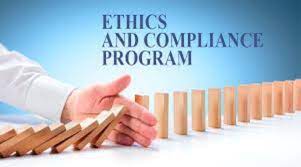Theology of Evangelism
Introduction
For a Christian to effectively share the gospel of Christ, a clear understanding of its implications and expected response is essential. Unlike other religions, Christianity understands the meaning of grace and the most critical ministry is making people believe the love that God has for them. In the theology of evangelism, Sin tends to manifest when people live in denial of God’s existence.
Although Satan gained control of the world at fall, Jesus repossessed it in Revelation 5 (Bible, 2000). Throughout the scriptures, the sermons given by apostles as they tried to preach the good news to the world are characterized by, authoritative evidence, vivid description of God’s activities, eyewitnesses, and miraculous deeds. The degree to which a Christian sacrifice for the gospel determines the reception of his/her message by unbelievers. Evangelism in the absence of theology degenerates into human manipulated desires and techniques.
On the other hand, theology without evangelism transforms into a powerless academic process. Evangelism should foster a sense of gratitude, concern, and responsibility based on passages such as Mathew 28: 18-20, Acts 20:21, Galatians 2:20 and John 14: 16 which demonstrate the love and expectation of Christ towards the saved in proclaiming the gospel to all nations so every person may repent and turn towards God (Bible, 2000). Through theology, a solid biblical foundation that can only be lived through passionate evangelism is realized.
History of Theology of Evangelism
Evangelism is a Greek word meaning gospel or good news (RMNI, 2015). In 1st Corinthians 15:3-5, the elements of the gospel are revealed; first, Jesus Christ died to redeem humankind from the bondage of sin, after which he resurrected on the third day. Jesus appeared to individuals and groups, and it is through seeing that resurrection was verified.
Paul asserts that man is saved by holding on to the message which was earlier preached, and if a person truly believes that Christ died and rose for the redemption of humankind, then he or she is truly saved. Paul goes further and mentions in Romans 10:9 that by confessing with the mouth that Jesus is Lord and believe in the heart that God resurrected Him from the jaws of death, then a person is saved. Evangelism takes place when a saved Christian communicates the good news so that the hearers can comprehend it and make an individual decision to get saved.
Coleman (2017) asserted that it is impossible for a human being to obtain sound doctrine without a clear understanding of the Bible. Evangelism is anchored in redemption. The saving nature of the scriptures breeds the urgency for proclaiming the message to every living creature as mandated in Mathew 4:19.
Recognizing the sovereignty of God is implicit in the study of theology of evangelism. If God truly exists, then the man should bow and worship His Lordship as stated in Isaiah 45:22, “and be ye saved: all the ends of the earth, for I am God and there is no one else” (Bible, 2000). The liberal theology is based on the premise that God acts in utmost integrity, he is holy, and loves unconditionally, such that God is perfect. Without acknowledging the Lordship of God and the importance of gospel, theology is in vain.
Preaching the gospel of Christ and reaching out to people to get saved is a requirement for every Christian. In the biblical passages, God is revealed to be love like 1 John 4:8. When a person is saved and is determined to live by the will of God, as projected in the scriptures, then the love for God compels one to reach to others through evangelism. In 2nd Kings 7-13, the author mentions four Israelite lepers who secured a deserted camp started to feast and possess the assets.
However, they then agreed that it was selfish of them to keep the good news and therefore decided to preach the deliverance message. Also, Christians are commanded to evangelize in Mathew 28: 19. A student of the word also understands that evangelism does not end after reaching to people and communicating the message of salvation and redemption.
Discipleship, baptism, teaching the word of God to converts and other believers, as well as reminding people to obey the word of God are critical elements factors that are learned through theology (Yong, 2014).
It is compulsory for Christians to evangelize to all people across the globe irrespective of the religious or ethnic affiliations of the hearers. Acts 28 talks about the disciples, who after receiving the Holy Spirit were to witness at their homes and in foreign lands (Bible, 2000). In the same scripture, Jesus tells Andrew and Peter that He would make them become fishers of men if only they followed him.
To fish, a person goes to the lake with bait, and correspondingly, Christians are supposed to leave their comfort and go out to preach the gospel of Christ but armed with the scriptures. Theology equips Christians with the word of God and creates a greater understanding of the relationship between humankind and God and the entire process of salvation. Without such knowledge, then evangelism lacks in substance, and the message may not be authoritative.
Paul was a teacher of the law and understood the mindset of Pharisees and other religious affiliations thus giving him an opportunity to communicate authoritatively.
Theologically, Jesus is the only human being who did not inherit the seed of sin of Adam (Coleman, 2011), which makes every other person sinful (Roman 5:12). Jesus is the word of God, did not have a beginning, and by being in physical form, he demonstrated his humanity and not origin or existence. He volunteered to leave his heavenly body and be like us to ease the anger of God towards humankind so that redemption through grace may take place (Romans 3:24, Peter 2:24).
As such, if a person rejects the gospel of Christ there is no other way either in heaven or on earth that he or she can be saved (Acts 4:13). Since there exist other gods luring people and offering false salvation, compassion is practiced by projecting the weakness of other gods and spread the true message of redemption and deliverance. Although issues arise about the uniqueness of Christ given that scriptures are firm in asserting that He is the only way through which humankind can be saved, the pastoral duty of Christians is to lead the world to the cross, which is the source of abundant grace and hope.
The psalmists, in Ps. 16:3 claimed that all those who pursue other gods tend to increase their adversity instead of receiving the healing power. Theology teaches about the ways of Christ, life and death, and most importantly salvation, which is given freely to all human beings (Barker et al. 1993).
A theology that is based on evangelism projects Christians towards the biblical goal which according to Jude (24) Christ is presented as a bride amassed in blood but found without fault in the mighty eyes of the creator. Such a theological perspective focuses the energy of Christians on hope through the affirmation that Christ is indeed victorious. Upon getting saved, disciples receive the Holy Spirit who guides people in living a pure and blemish-free lifestyle.
This means that Christ is continuously working in the life of a believer through the spirit to ensure that the worldly passions do not take over. It is by studying the word and living in the world that Christ is manifested in the life of a Christian. Theology, therefore, serves to promote evangelism, which is not possible if a person does not, indeed understand and decide to live by the word of God.
Conclusion
A theology of evangelism asks Christians to fix their attention on upon the victory of Christ irrespective of the sufferings of the world. Even though it is not clear how the saved shall be, it is certain that when Christ appears, they shall be like Him. God has been and is still working to ensure that He accomplishes His purpose. It is upon every Christian to apply the word learned from the scriptures to proclaim the Gospel to all corners of the world.
The message of redemption should be the focal point of the theology ministry. Christ commissioned every Christian to make disciples who are willing to learn from the world and sacrifice their flesh for His glorious manifestation. Theology of evangelism is rooted in seeking the kingdom of God above everything else, denying oneself and taking up the cross, striving to be like Christ.
Reference List
Barker, K. L., Burdick, D., & Burdick, D. W. (1993). The NIV study bible, new international version. Zondervan Bible Publishers.
Bible, H. (2000). King James Version. Texas: National Publishing Company.
Coleman, R. E. (2011). The Heart of the Gospel: The Theology Behind the Master Plan of Evangelism. Baker Books.
Coleman, R. E. (2017). Theology of Evangelism. Baker Books. Retrieved from https://korycapps.files.wordpress.com/2010/06/re-coleman_theology-of-evangelism.pdf
RMNI Reconciliation Network Ministries (2015). Retrieved from https://www.rmni.org/teaching-resources/evangelism-a-discipleship/theology-of-evangelism.html
Yong, A. (2014). The Missiological Spirit: Christian Mission Theology in the Third Millennium Global Context. Wipf and Stock Publishers.
Want help to write your Essay or Assignments? Click here.









